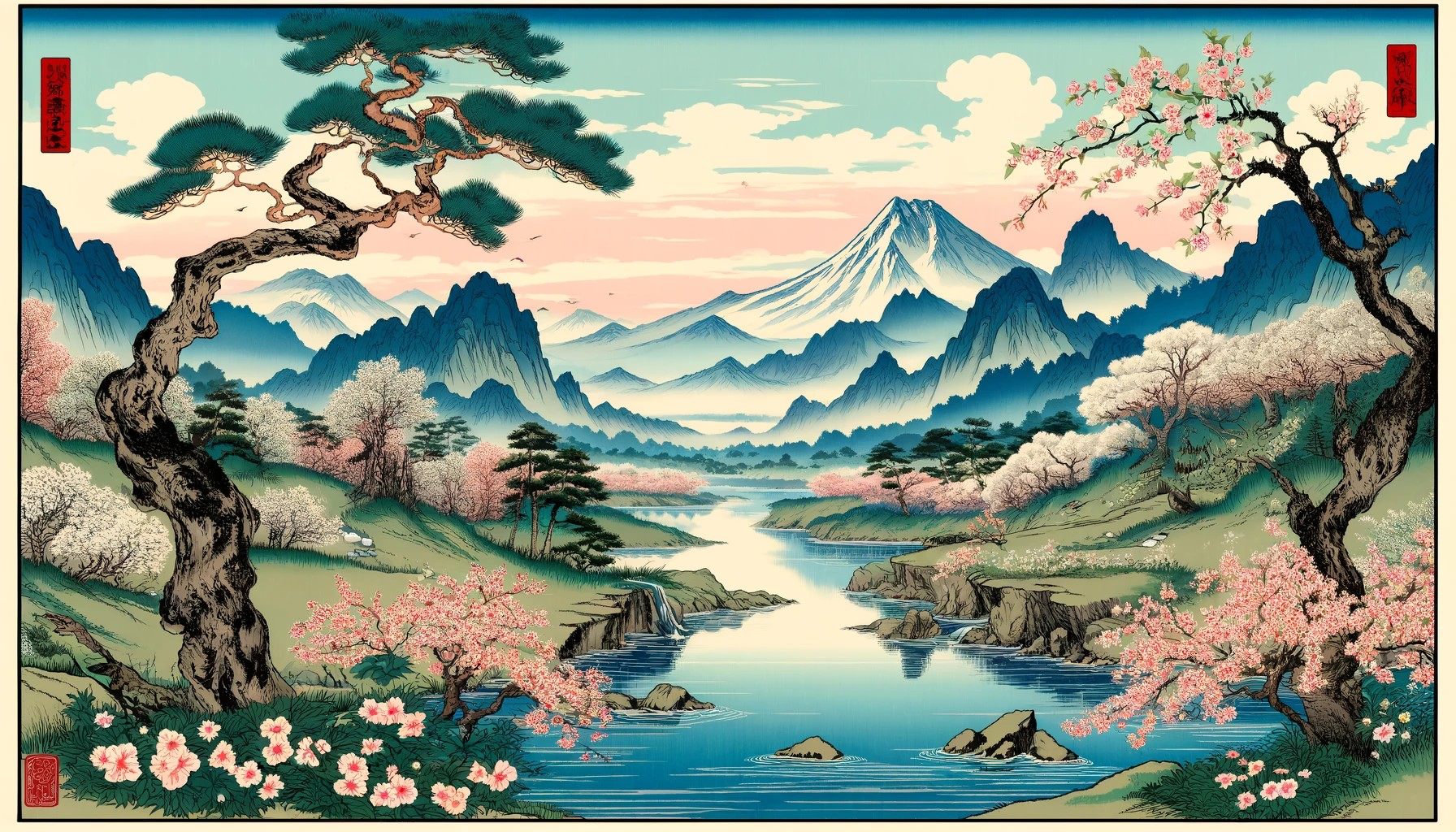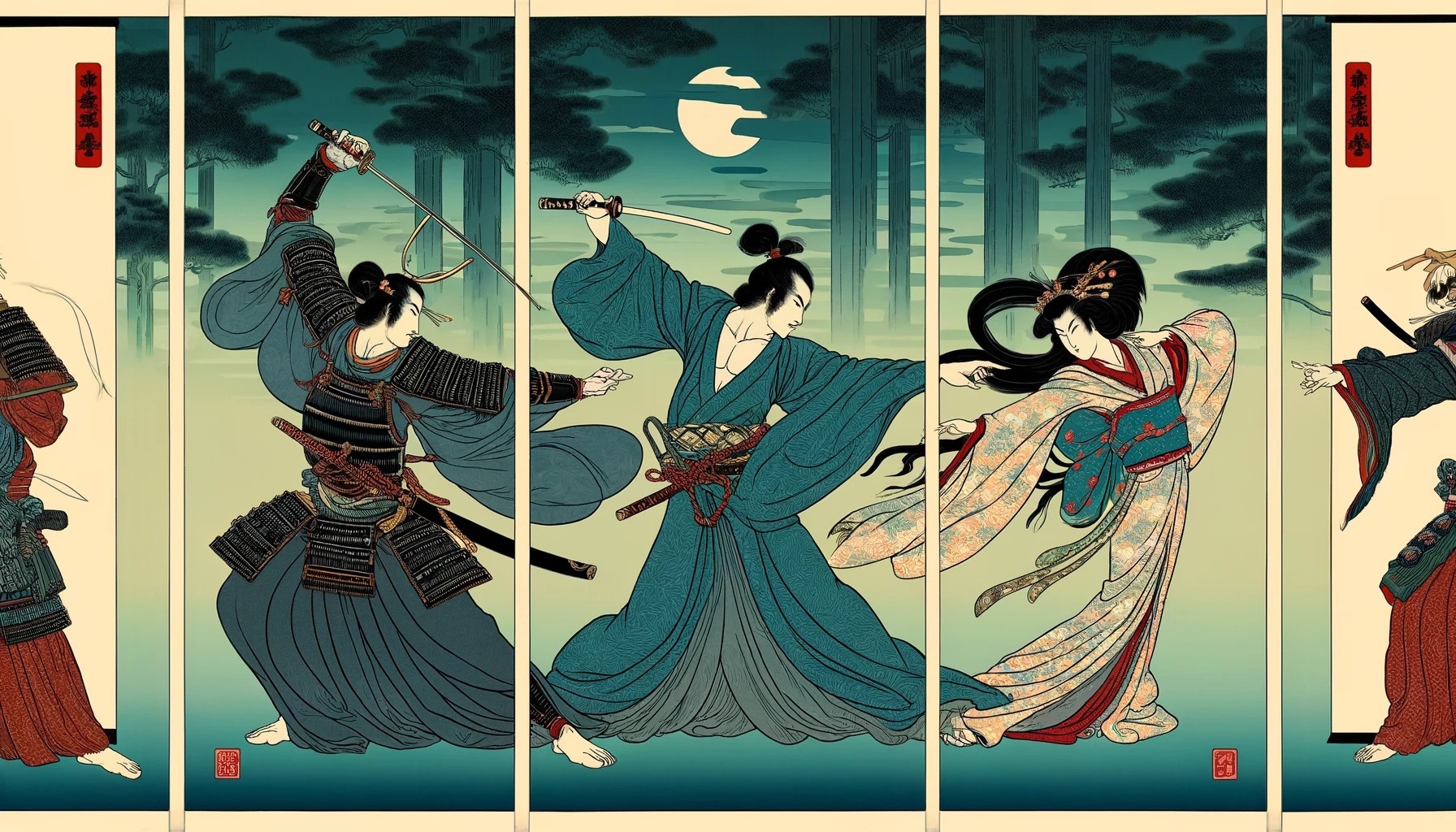Takeuchi Keishu (1861 ~ 1943)
Takeuchi Keishu (武内桂舟), born Takeuchi Shinpei (武内鋠平) in Kanazawa (金沢), Ishikawa Prefecture (石川県), and raised in Edo (江戸),
was the son of a daimyō (大名) from Wakayama Prefecture (和歌山). As a young man, he was adopted as a student by the family of the renowned
painter Eitoku Kanō (狩野 永徳), head of the Kanō school. However, after leaving the Kanō school, Keishu became a student of Tsukioka Yoshitoshi (月岡芳年),
another influential figure in his artistic development.
During the chaotic Meiji Restoration period (Meiji Ishin, 明治維新), which led to upheavals and civil wars, Keishu was unable to dedicate himself fully to his
studies. To make a living, he began decorating porcelain for export. After his brother's suicide, he returned home, continuing his work as a porcelain decorator.
Faced with a salary reduction imposed by his employer to increase profits, he started creating hanshita (版下), the black and white outline drawings used for carving
the woodblock print's key block.
Among his works, the kuchie (口絵), frontispieces created for the Ken'yūsha (硯友社) literary group, the Hakabunkan (博文館) publisher, and other children's books are particularly
notable. These illustrations often became more popular than the novels themselves. Despite being one of the best students of Zeshin and Yoshitoshi, little is known about
Keishu today, whose works are held in collections such as the British Museum and the Minneapolis Institute of Arts.

Widow and widower
Bungei magazine, 15th volume, N°14
Sold out


